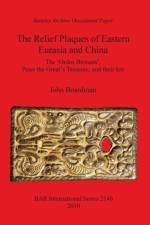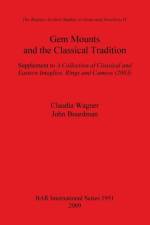von John Boardman & Claudia Wagner
237,00 €
This volume presents a selection from a large private collection of engraved gems, finger rings and cylinder seals. It was created from 1921 through the 1960s from various sources, and includes many examples from old collections that had come on to the market, notably the Evans, Southesk, and (for later gems) Poniatowski, as well as many purchased from dealers and in auctions. They are now in the possession of the collector's son, who encouraged this publication. Boardman had already published a selection, mainly of the Greek and Etruscan gems from the collection, in Intaglios and Rings (London, Thames and Hudson, 1975), and these stones have since been purchased by the J. Paul Getty Museum in Malibu (except for nos. 9, 17, 86, 149, 154, 205-208). The present selection also includes some early gems, omitted from the earlier publication for various reasons, but it is mainly devoted to the Hellenistic and Roman, as well as to a choice of the many Sasanian stones, cylinder seals, other eastern, and Neo-classical. The selection has been determined by the apparent interest of each piece for either its style or its subject, but also represents a fairly typical range of gem engraving through the Greek and Roman worlds, and outside it - including Etruscan, Greco-Persian, Syrian, Persian, Phoenician, Sasanian and the early production of cylinders in the near east. This is the type of material that was available for collectors in the first half of the last century. The catalogue takes the form of a descriptive handlist rather than a catalogue raisonné, with select comparanda, and with more attention paid to the puzzling or important pieces. Of these there are several of the highest quality, and several of exceptional archaeological or iconographic interest. The prime motive has been to make much of the collection known to scholars who might wish to take study of individual pieces further. To this end the publication of mainly unprovenanced engraved gems is of no less importance than that of unprovenanced decorated vases. This volume inaugurates the new series Studies in Gems and Jewellery.




